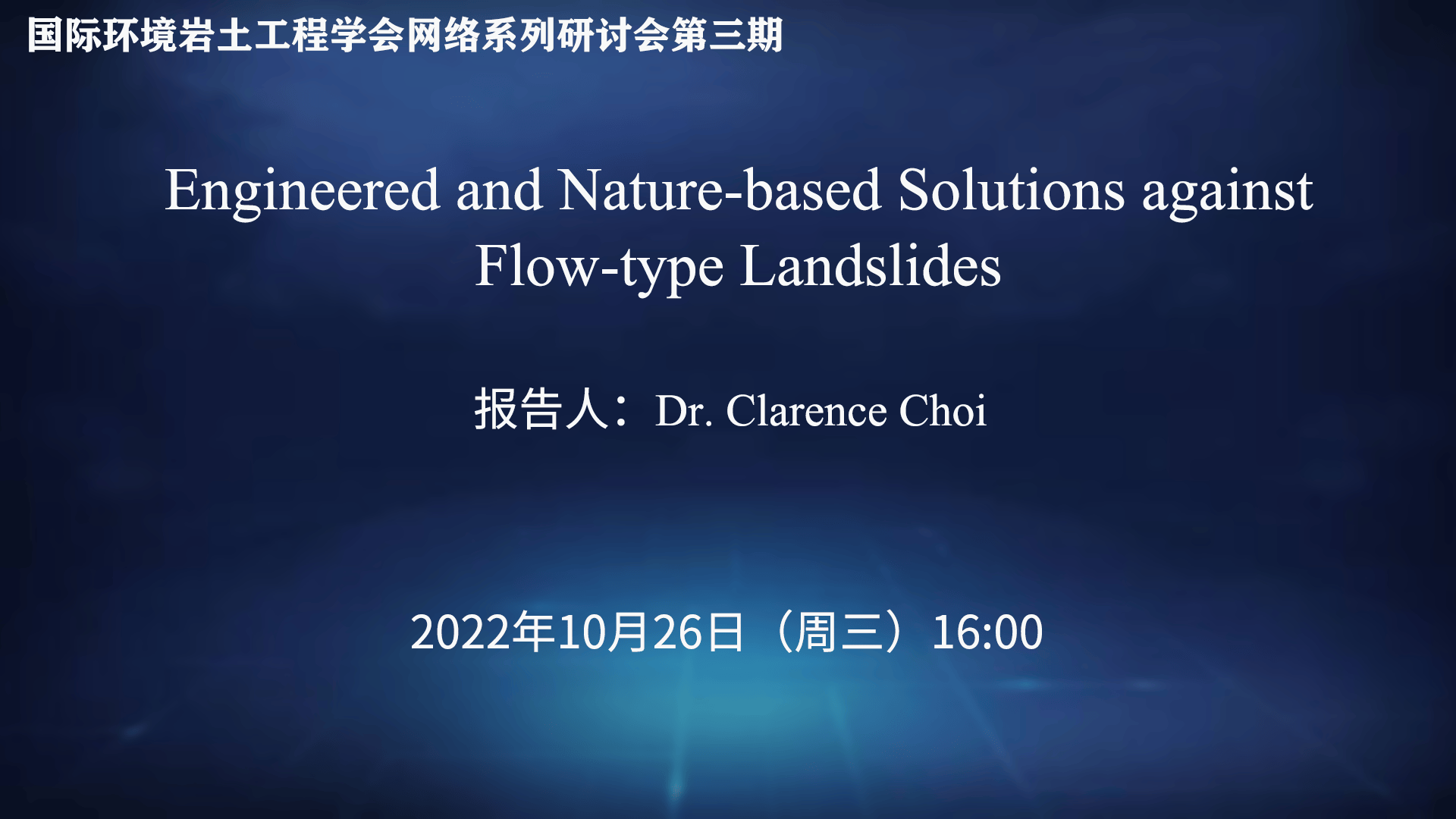
题目: Engineered and Nature-based Solutions against Flow-type Landslides【国际环境岩土工程学会网络系列研讨会第三期】
报告人:Dr. Clarence Choi
时间:2022年10月26日(周三)16:00
直播地址:
主办方:国际环境岩土工程学会(ISEG)
报告人资料:Clarence Choi is Assistant Professor of Civil Engineering at the University of Hong Kong. His research interests are on the prediction and mitigation of landslide hazards, and ground improvement. His research has been awarded various awards, including the 3rd Hutchinson Lecture, ISSMGE Bright Spark Award, R.M. Quigley Prize from the Canadian Geotechnical Society, and Telford Premium Prize from ICE, UK. He serves on editorial panels, including Landslides and Engineering Geology. He chairs the debris flow and steep creek hazards committee of the Association of Geohazard Professionals, is a chair-nominated member of TC208 of the ISSMGE on slope stability, and one of 26 international JTC1 members on natural hillsides and slopes.
摘要: In 2019, landslides caused more than US$4 billion in damage and 450 fatal landslide events killed more than 3,250 people globally. The Intergovernmental Panel on Climate Change of the United Nations (UN) expects an increase in extreme rainfall events, which will trigger more landslides. The UN also expects that by 2030, 60% of the global population will live in urban areas. In mountainous urban areas, people will encroach previously undeveloped hillsides and expose themselves to landslide risk. A recent example of the consequences of climate change and urbanization is the 2021 landslide in Atami City, Japan, which caused 20 fatalities. Among the different types of landslides, debris flows are the most dangerous. These high-velocity mixtures of soil and water have buried entire settlements (e.g., 2008 debris flow in Zhouqu, China, caused about 1,000 fatalities). To mitigate debris flow hazards, engineered and nature-based solutions can be adopted. Engineered solutions include rigid and flexible barriers, while nature-based solutions include leveraging the effects of forests in debris mobility assessments. In this webinar, the state-of-the-art in physical and numerical modelling of mitigation strategies against debris flows will be presented, and the future outlook on this topic will be discussed.





